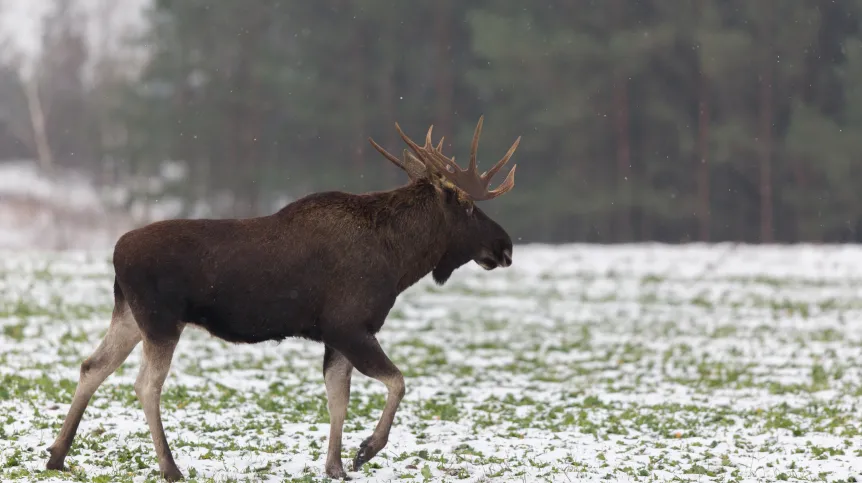
July temperature is the most important climatic factor affecting the distribution of elk, according to research on the impact of climate change and deforestation on changes in the range of moose in Eurasia over the last 50 thousand years.
Research on the impact of climate change and deforestation on changes in the range of elk (Alces alces) in Eurasia over the last 50 thousand years was conducted by an international team led by Magdalena Niedziałkowska, PhD, from the Mammal Research Institute of the Polish Academy of Sciences in Białowieża, in collaboration with scientists from the Centre of New Technologies and the Faculty of Biology of the University of Warsaw, and the Faculties of Biological Sciences, and Biotechnology of the University of Wrocław. The results of the study were published in Science of the Total Environment (https://doi.org/10.1016/j.scitotenv.2024.177235).
The scientists analysed the environmental conditions that prevailed in 655 locations where elk occurred from the late Pleistocene to the present.
It turned out that the most important climatic factor influencing the distribution of this species on a biogeographic scale was the July temperature. In over 90 percent of places where elk were found, the average temperature in the warmest month of summer did not exceed 19 degrees Celsius.
The researchers also showed that the environmental conditions of elk in Europe were significantly different from those in which representatives of Alces alces lived in Asia. European elk chose regions with a milder climate (e.g. warmer winters), higher productivity, and more often covered with forest than their Asian cousins. The results confirm that European and Asian elk differ significantly, as evidenced by the genetic and morphological differences between the two forms of the Alces alces species, described in other studies.
The scientists also determined in which regions of Eurasia the elk survived the Last Glacial Maximum (LGM).
'As with other mammals inhabiting the temperate zone, during the last glaciation, the elk disappeared from higher latitudes, and its range shifted to the more southern areas of Eurasia. However, after the glacier retreated, during the warming of the climate in the Holocene, this species quickly recolonised large areas of Europe and Asia, including their northern parts - but, unlike other mammal species, Alces alces became extinct in its southern glacial refuges. However, the greatest changes in the elk's range occurred in the west to east direction. Over the past few thousand years, the elk disappeared from Western Europe and now occurs only in the northern, central and eastern parts of the continent. The southwestern boundary of the continuous range of this species currently runs through the territory of our country', the authors of the study summarise in a press release sent to the PAP - Science in Poland.
The researchers also conducted ecological niche modelling - showing that the extinction of elk in western Europe was not related to the warming of the climate in the Holocene.
Based on these analyses, they found that although southern Europe has unfavourable environmental conditions for elk, the total area where this species could potentially occur has increased since the early Holocene, when the species' range was the largest.
At the same time - as the authors of the study point out - the decline of the elk population in Europe correlated with the forest cover decrease, which may indicate that the extinction of this one of the last species of European megafauna is more related to factors related to human activity, such as landscape transformation and habitat fragmentation, than to climate change. In the case of large mammals, a significant impact on the decline in numbers and the contraction of their range (apart from the destruction of their habitats) was overhunting, which is a well-documented factor in the case of elk.
'Currently, the numbers of this species are increasing, at least in Poland, which is related to the elk hunting ban introduced by the Polish government in 2001. However, it is not known to what extent this species will be able to recolonise areas of Western Europe in view of a warming climate and, at the same time, the progressive fragmentation and isolation of suitable environments. Reducing the connectivity between individual populations may significantly limit the flow of individuals and their genes, which may threaten the sustainability of smaller populations in the long term. It will also be important to examine the extent to which elk populations inhabiting the southwestern edge of their range are limited by biotic factors, such as the influence of pathogens and parasites, the ranges of which increase with the increasing temperature on Earth', the scientists suggest.
PAP - Science in Poland
zan/ agt/













